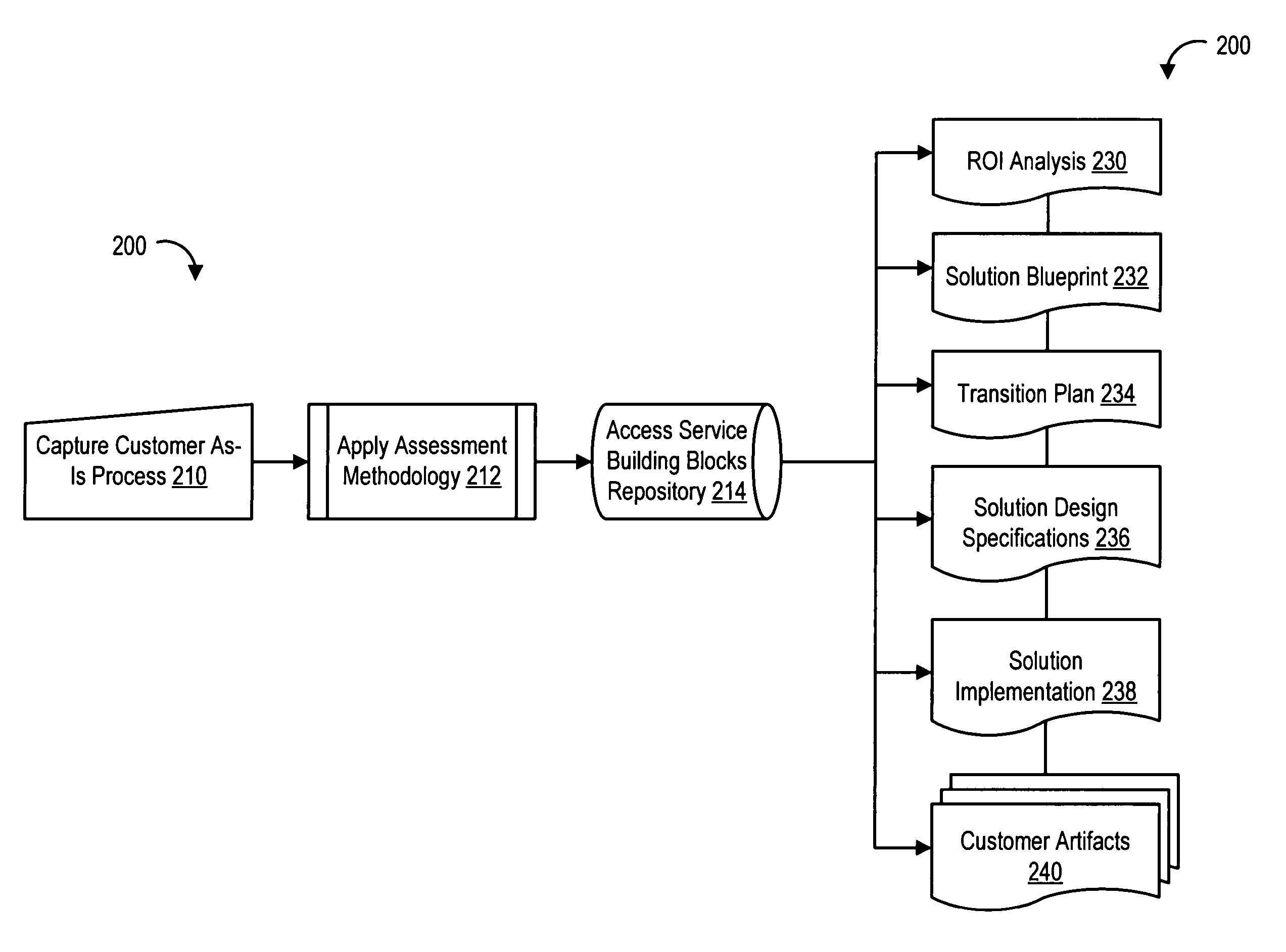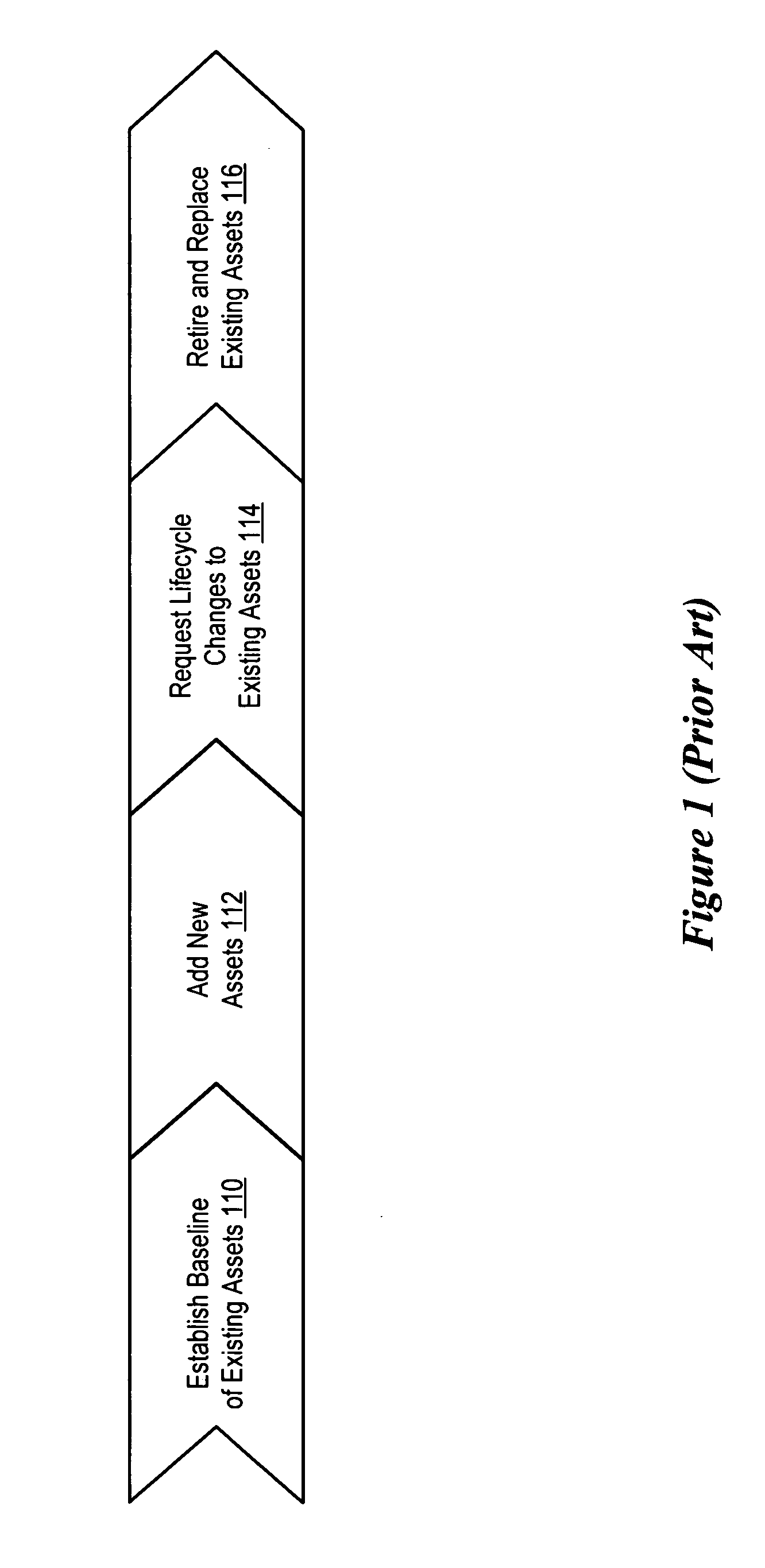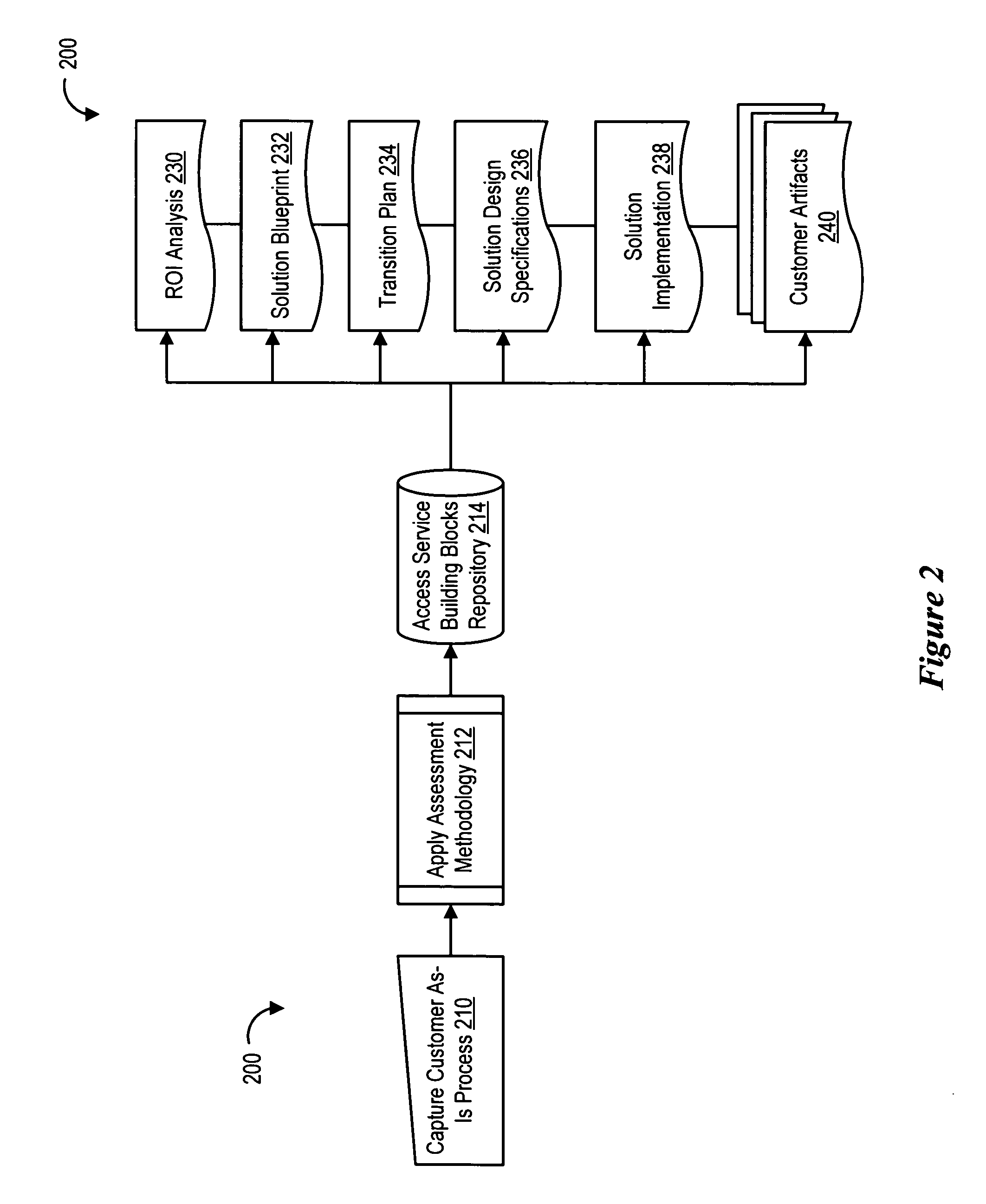Integrated customer assessment diagnostic tool
a customer assessment and diagnostic tool technology, applied in the field of business process object modeling, can solve the problems of inability to achieve consolidated reporting and management, inability to achieve process integration, etc., and achieve the effect of optimizing customer experience, high reusableness, and facilitating automated generation
- Summary
- Abstract
- Description
- Claims
- Application Information
AI Technical Summary
Benefits of technology
Problems solved by technology
Method used
Image
Examples
Embodiment Construction
[0032] Referring to FIG. 2, a block diagram of an integrated customer assessment diagnostic tool 200 is shown. The integrated customer assessment diagnostic tool 200 provides an application of a unifying process object modeling. The integrated customer assessment diagnostic tool 200 provides for direct input into and creation of downstream artifacts in the lifecycle services solution development process based on an up front customer current state assessment. The assessment yields detailed information in the form of building block process elements, operational costs, and state data such as number of assets to be managed and volumes and types of service events.
[0033] More specifically, the integrated customer assessment diagnostic tool 200 captures a customer as-is process at step 210. The capture provides a solution modeling approach that is based on standardized reusable process objects and information objects (with attributes such as cost service incident levels, constraints, etc)...
PUM
 Login to View More
Login to View More Abstract
Description
Claims
Application Information
 Login to View More
Login to View More - R&D
- Intellectual Property
- Life Sciences
- Materials
- Tech Scout
- Unparalleled Data Quality
- Higher Quality Content
- 60% Fewer Hallucinations
Browse by: Latest US Patents, China's latest patents, Technical Efficacy Thesaurus, Application Domain, Technology Topic, Popular Technical Reports.
© 2025 PatSnap. All rights reserved.Legal|Privacy policy|Modern Slavery Act Transparency Statement|Sitemap|About US| Contact US: help@patsnap.com



